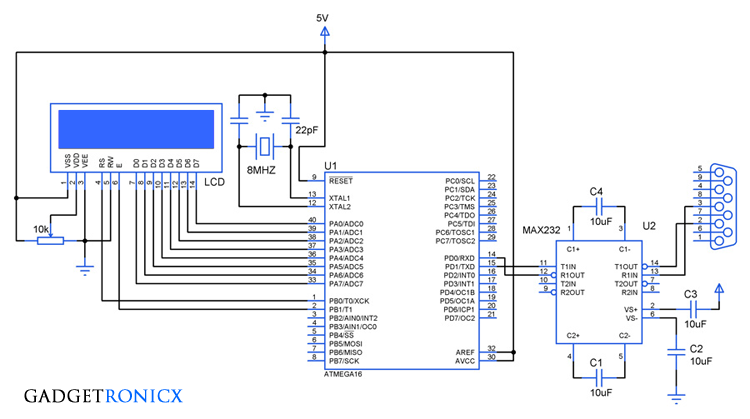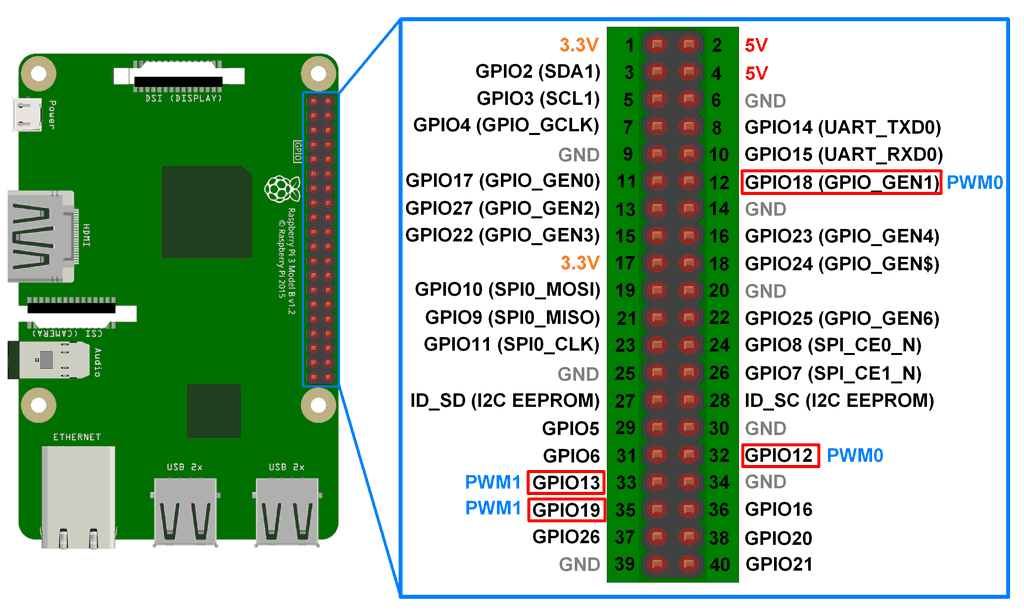Avr Software Uart In C
AN1451 - AVR306: Using the AVR UART in C on tinyAVR and megaAVR devices 207KB. AN42787 - AVR42787: AVR Software User Guide 363KB. AN8014 - AVR135: Using Timer Capture to Measure PWM Duty Cycle on tinyAVR and megaAVR devices. IAR Embedded Workbench for AVR is a complete set of powerful C/C development tools with extensive support for. Simple transmit-only UART driver This is a very simple C-based transmit-only UART, good for low speeds up to 4800 baud when used with a 1MHz clock. The intent of this is to provide a simple console output for debugging code on small ATTiny-series microcontroller, but in theory should work on any AVR chip.
I've written a few software UARTs for AVR MCUs. All of them have bit-banged the output, using cycle-counted assembler busy loops to time the output of each bit. The code requires interrupts to be disabled to ensure accurate timing between bits. This makes it impossible to receive data at the same time as it is being transmitted, and therefore the bit-banged implementations have been half-duplex. By using the waveform generator of the timer/counter in many AVR MCUs, I've found a way to implement a full-duplex UART, which can simultaneously send and receive at up to 115kbps when the MCU is clocked at 8Mhz.- Studio 7 is the integrated development platform (IDP) for developing and debugging all AVR® and SAM microcontroller applications. The Atmel Studio 7 IDP gives you a seamless and easy-to-use environment to write, build and debug your applications written in C/C or assembly code.
- Hi, recently i am working with avr software uart.but my code is not working.i am working with atmega32.i am using icp1 pin only.first timer1 is started at normal mode.after chaptering the start beat timer1 is in ctc mode and icp1 resister is used as top value and icp1 pin is used as rx pin.here is my code.
 I expect most AVR developers are familiar with using PWM, where the output pin is toggled at a given duty cycle, independent of the code execution. The technique behind my full-duplex UART is using the waveform generation mode so the timer/counter hardware sets the OC0A pin at the appropriate time for each bit to be transmitted. TIM0_COMPA interrupt runs after each bit is output. The ISR determines if the next bit is a 0 or a 1. For a 1 bit, TCCR0A is configured to set OC0A on compare match. For a 0 bit, TCCR0A is configured to clear OC0A on compare match. The ISR also updates OCR0A with the appropriate timer count for the next bit. To allow for simultaneous receiving, the TIM0_COMPA transmit ISR is made interruptible (the first instruction is 'sei').
I expect most AVR developers are familiar with using PWM, where the output pin is toggled at a given duty cycle, independent of the code execution. The technique behind my full-duplex UART is using the waveform generation mode so the timer/counter hardware sets the OC0A pin at the appropriate time for each bit to be transmitted. TIM0_COMPA interrupt runs after each bit is output. The ISR determines if the next bit is a 0 or a 1. For a 1 bit, TCCR0A is configured to set OC0A on compare match. For a 0 bit, TCCR0A is configured to clear OC0A on compare match. The ISR also updates OCR0A with the appropriate timer count for the next bit. To allow for simultaneous receiving, the TIM0_COMPA transmit ISR is made interruptible (the first instruction is 'sei').The receiving is handled by PCINT0, which triggers on the received start bit, and TIM0_COMPB interrupt which runs for each received bit. I wrote this ISR in assembler in order to ensure the received bit is read at the correct time, taking into consideration interrupt latency. If any other interrupts are enabled, they must be interruptible (ISR_NOBLOCK if written in C). I've implemented a two-level receive FIFO, which can be queried with the rx_data_ready() function. A byte can be read from the FIFO with rx_read().
The code is written to work with the ATtiny13, ATtiny85, and ATtiny84. Only PCINT0 is supported, which on the t84 means that the receive pin must be on PORTA. With a few modifications to the code, PCINT1 could be used for receiving on PORTB with the t84. The total time required for both the transmit and the receive ISRs is 52 cycles. Adding an average interrupt overhead of 7 cycles for each ISR means that there must be at least 66 cycles between bits. At 8Mhz this means the maximum baud rate is 8,000,000/66 = 121kbps. The lowest standard baud rate that can be used with an 8Mhz clock is 9600bps.
 The wgmuart application implements an example echo program running at the default baud rate of 57.6kbps. In addition to echoing back each character received, it prints out a period '.' every second along with toggling an LED.
The wgmuart application implements an example echo program running at the default baud rate of 57.6kbps. In addition to echoing back each character received, it prints out a period '.' every second along with toggling an LED.
I've published the code on github.
I've written a few software UARTs for AVR MCUs. All of them have bit-banged the output, using cycle-counted assembler busy loops to time the output of each bit. The code requires interrupts to be disabled to ensure accurate timing between bits. This makes it impossible to receive data at the same time as it is being transmitted, and therefore the bit-banged implementations have been half-duplex. By using the waveform generator of the timer/counter in many AVR MCUs, I've found a way to implement a full-duplex UART, which can simultaneously send and receive at up to 115kbps when the MCU is clocked at 8Mhz.
I expect most AVR developers are familiar with using PWM, where the output pin is toggled at a given duty cycle, independent of the code execution. The technique behind my full-duplex UART is using the waveform generation mode so the timer/counter hardware sets the OC0A pin at the appropriate time for each bit to be transmitted. TIM0_COMPA interrupt runs after each bit is output. The ISR determines if the next bit is a 0 or a 1. For a 1 bit, TCCR0A is configured to set OC0A on compare match. For a 0 bit, TCCR0A is configured to clear OC0A on compare match. The ISR also updates OCR0A with the appropriate timer count for the next bit. To allow for simultaneous receiving, the TIM0_COMPA transmit ISR is made interruptible (the first instruction is 'sei').
The receiving is handled by PCINT0, which triggers on the received start bit, and TIM0_COMPB interrupt which runs for each received bit. I wrote this ISR in assembler in order to ensure the received bit is read at the correct time, taking into consideration interrupt latency. If any other interrupts are enabled, they must be interruptible (ISR_NOBLOCK if written in C). I've implemented a two-level receive FIFO, which can be queried with the rx_data_ready() function. A byte can be read from the FIFO with rx_read().
Avr Software Uart
 The code is written to work with the ATtiny13, ATtiny85, and ATtiny84. Only PCINT0 is supported, which on the t84 means that the receive pin must be on PORTA. With a few modifications to the code, PCINT1 could be used for receiving on PORTB with the t84. The total time required for both the transmit and the receive ISRs is 52 cycles. Adding an average interrupt overhead of 7 cycles for each ISR means that there must be at least 66 cycles between bits. At 8Mhz this means the maximum baud rate is 8,000,000/66 = 121kbps. The lowest standard baud rate that can be used with an 8Mhz clock is 9600bps.
The code is written to work with the ATtiny13, ATtiny85, and ATtiny84. Only PCINT0 is supported, which on the t84 means that the receive pin must be on PORTA. With a few modifications to the code, PCINT1 could be used for receiving on PORTB with the t84. The total time required for both the transmit and the receive ISRs is 52 cycles. Adding an average interrupt overhead of 7 cycles for each ISR means that there must be at least 66 cycles between bits. At 8Mhz this means the maximum baud rate is 8,000,000/66 = 121kbps. The lowest standard baud rate that can be used with an 8Mhz clock is 9600bps.The wgmuart application implements an example echo program running at the default baud rate of 57.6kbps. In addition to echoing back each character received, it prints out a period '.' every second along with toggling an LED.